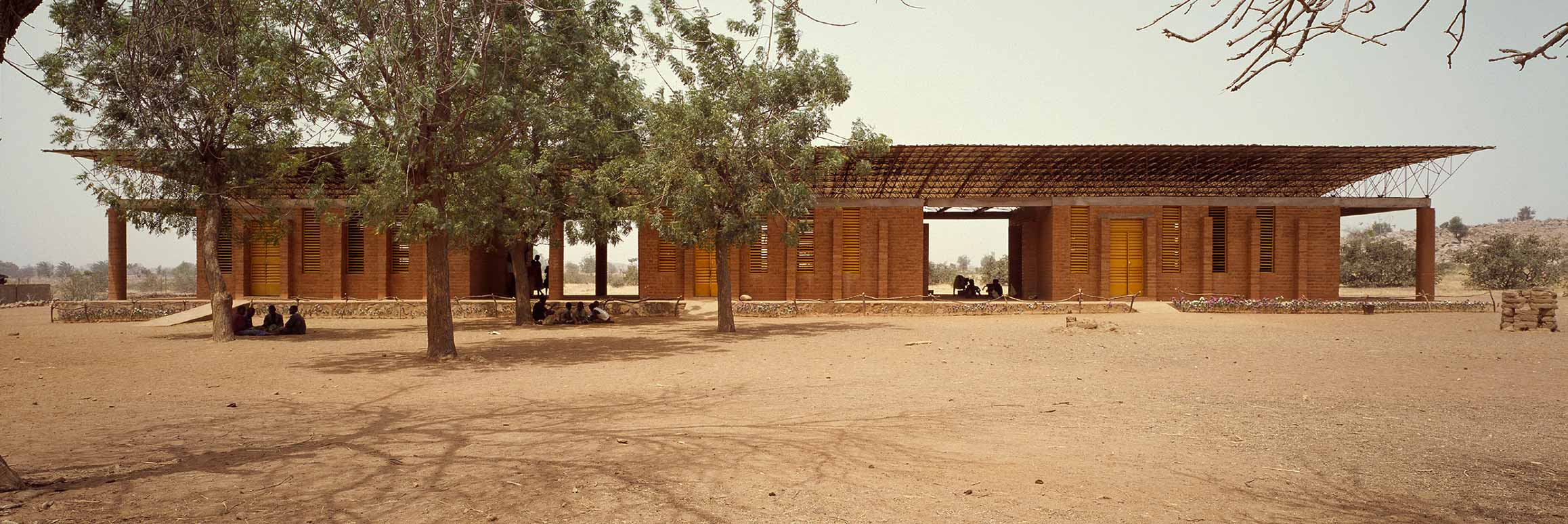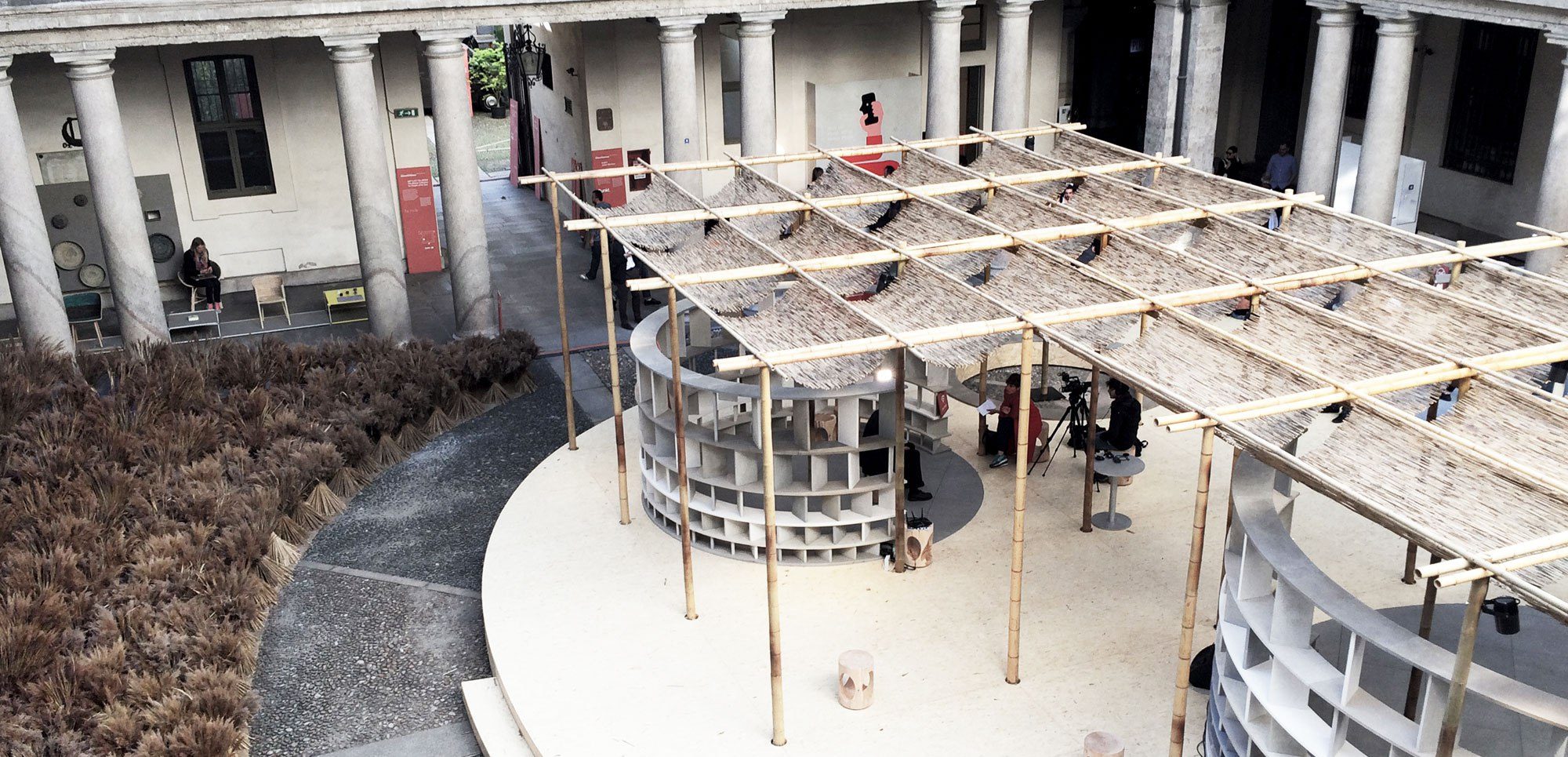Utopianism and African Design: Contemporary African Designers Must Be Community-Oriented
Francis Kere’s prints on his native Gando Community.
 Dezeen || Photograph by Enrico Cano
Dezeen || Photograph by Enrico Cano
It needs no further emphasis, that it should be the manifest destiny of all African designers to set, at the zenith of their ambition, the desire to create a legacy; to lend a hand to the promotion of the Black culture and to lend their minds to the development of the Black Continent. Design Historian, Professor Victor Margolin, in his opening essay to ‘Design for the Good Society’ clearly states ‘I claim that the ultimate purpose of design is to contribute to the creation of a good society…’ The crux of this essay was clearly a call to contemporary designers to take a leaf off the book of utopian design visionaries of time past, and see the community as the primary target of design activism. This ideal has been embodied by Burkina Faso’s Diébédo Francis Kéré much more than most.
The veteran architect, born in Gando community, south-east of Ouagadougou, Burkina Faso was the first child in the community to be sent to school. His father, the community chief at that time wished that his son learns the basic skills of reading and doing his sums. Future evidence would show that Francis Kéré definitely raised the bar a notch to become one of the leading architects of this generation. If his plethora of Awards and Harvard Professorships is not enough proof, then his efforts and success at revolutionizing Gando’s educational system, and promoting Africa’s architecture in diaspora should be more than enough.
 The Schorge Secondary school in Koudougou || Photo: Susanne Pertl for TED.
The Schorge Secondary school in Koudougou || Photo: Susanne Pertl for TED.
However, this article is not focused on proving the ingenuity of the man, but rather, the importance and implication of his philosophy. Francis Kere’s diploma project won him the Aga Khan Award for Architecture in 2004. This was the construction of a primary school in his native Gando community. As a kid, 7 years old Francis Kéré was sated with the task of traveling near 40 kilometers to attend a primary school. Spurred by this experience and the support he received from his local community, Francis Kere, even as an undergraduate of the Technical University of Berlin could not wait till he graduated to give back to his community;
“I just wanted to use these skills and do something for my community — to create the first school so that the kids can stay by their parents, their relatives, their brothers, and sisters and get an education. That was what pushed me.” Kere tells TED
However, bereft of funds and materials, it looked an Herculean task to build a school, talk less of an award-winning landmark. This challenge was overcome with what would come to define the ideal behind Kere’s designs. Pooling human and natural resources together, the whole Gando community collaborated to build their maiden school. The children brought bricks of clay to build the school’s foundation; the women fetched the water used for building while the men worked on the construction. Local materials were used predominantly in its construction making the design very reflective of the climate and natural conditions of the community. Brick by brick, Gando Primary School was raised as a result of a common communal interest. The school became ‘’…a landmark of community pride and collectivity’’. It is what collaboration in design implies; the people, nature and their common interest working together to create impact.
 Shelter at the Milan Fuorisalone in 2016 || Photo courtesy Kéré Architecture.
Shelter at the Milan Fuorisalone in 2016 || Photo courtesy Kéré Architecture.
The Gando primary school will later prove to be a mere harbinger of the impact Francis Kéré’s Architecture would come to have on Burkina Faso and its surrounding Africa States. After the primary school, Kéré would go on to construct the Gando Teachers’ Housing, Gando Secondary School, Gando School Library, the Léo Surgical Clinic & Health Center in Burkina Faso and even national monuments like the Opera Village in Ouagadougou and the National Park of Mali in Bamako.
Born into a community-oriented Burkinabe clime, Francis Kere’s method and means is a testament to his roots. Be it the Gando secondary school in Burkina Faso, the Louisiana Museum of Modern Art in Humlebæk, Denmark or the Serpentine Pavilion in London’s Kensington Gardens, Francis Kere had always found a means of making plain his source of inspiration. People and community-oriented, Francis works engender collaboration. He creates a clime that compels people to sit down together, think together and bring out new ideas. His designs show, in varying degrees, the infusion of his Burkinabe heritage with his European education.
Francis Kéré in diaspora takes a sense of his home with him and he would come to build some of the most awe-inspiring architectural works inculcating the African ideology. He would go on to institutionalize a sense of communal living and collaboration in his architecture, a design concept borne of his experiences, cultural heritage and African root; a concept based on the central nature of the community:
“A circle is, in our community, something so important. It’s where everyone has the same voice, the same visibility,” he says. “There’s no hierarchy; it’s a space with equality wherever you sit.”
African design has the potential to unify the African culture and to voice her viability. The architecture of Francis Kere embodies this potential; to be a space of coming together, of thinking about how best to bring Africa to the world and the world in return, to Africa.
 Dezeen ||
Dezeen ||


